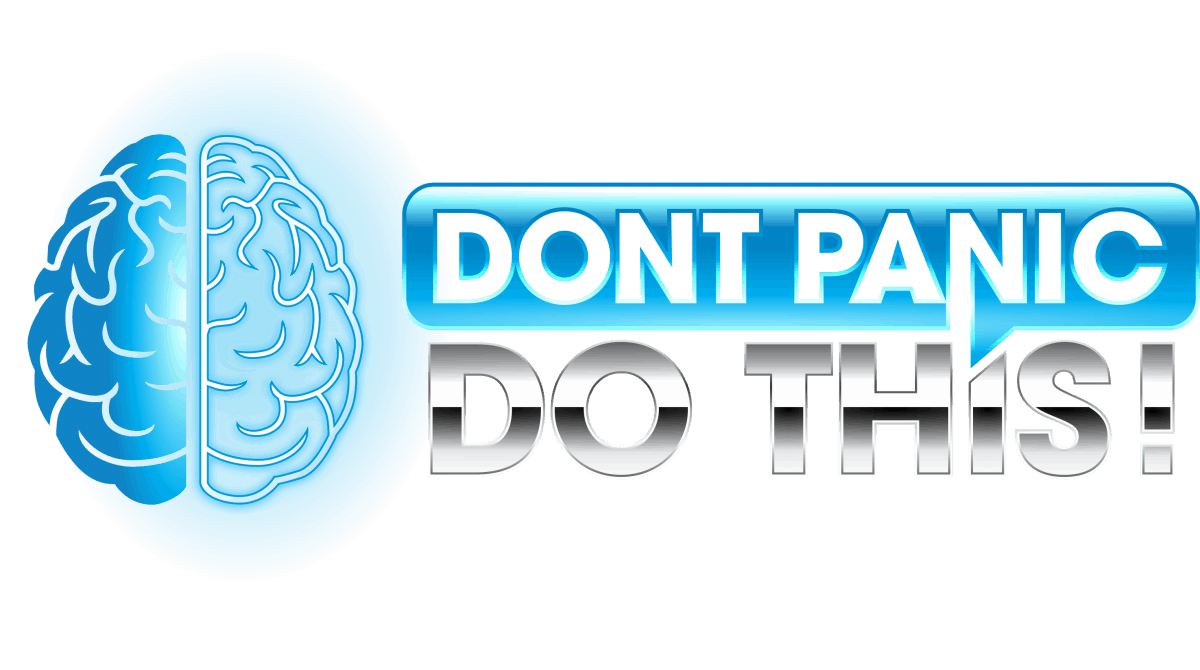Looking back on my high school and college years, I recall all the ways in which my classroom anxiety affected my ability to focus and learn. I made my best efforts to beat anxiety in school, and certain teaching styles helped me immensely. So, how can teachers help students with anxiety?
- Ditch the “Ice Breakers”
- Learn How to Identify Anxiety in Students
- Make it Clear That You Are Willing to Help
- Offer Accommodations for Those with Anxiety
- Provide the Opportunity for Alternative Assignments
- Avoid Singling Students Out
- Don’t Ask Students to Pick Their Own Groups/Teams
- Encourage Students to Leave Their Comfort Zone on Their Own Terms
- Consider Extracurricular Activities for Anxiety Support
Everyone has that “one teacher,” who changed their life and whom they’ll never forget. By following the above steps to help students with anxiety in the classroom, you can be that teacher for someone.
If the above methods seem a bit vague, no worries. We’re about to go into much greater detail about how teachers can help students with anxiety.
Alright, let’s dive in!
Ditch the “Ice Breakers”
Many teachers and professors use “Ice Breakers” on the first day of class to try and help students loosen up and get to know each other.
While this sounds like a nice idea on paper, this strategy is severely outdated.
“Let’s go around the room and each say one fun fact about ourselves,” is a sentence that triggers anxiety in many students; even those without an anxiety disorder!
The feeling of anticipation anxiety, watching your turn approach, coupled by the social anxiety of trying to find the right thing to say without embarrassing yourself, does not help students with anxiety to “loosen up and get comfortable.”
I actually used to skip the first day of class in college for this very reason. I just hated having the focus shift towards me while I tried to come up with something “interesting enough to say,” but not so interesting that the professor asks me to elaborate.
I’ll never forget back in 2013 telling the professor that my interesting fact was I had just gotten back from an exchange program living in Australia.
“Oh, that’s interesting! Why don’t you tell us some more about that?”
My stomach dropped. The last thing an anxious student wants is more time in the spotlight.
From then on, my “interesting fact” became: “I like to skateboard” (I have never skateboarded in my life). Nice, boring answer. Moving on.
Seriously though, “Ice Breakers” are not helpful, they are immensely stressful triggers for students with social anxiety or phobias such as public speaking. If you want to say a few facts about yourself, that’s fine, but don’t force your students to do it; teachers are professional public speakers, so they tend to forget that not everyone is comfortable in the spotlight.
Don’t believe me? Anonymously survey your students about how they feel about ice breakers and see for yourself.

Learn How to Identify Anxiety in Students
Since you’re reading this article, I assume that you are a genuinely good teacher who wants to learn how teachers can help students with anxiety. The fact is, helping students with anxiety in school is much easier if you actually know how to identify anxiety in students in the first place.
Anxiety is not always easy to identify, since most people do everything they can to hide their anxiety symptoms. Generally speaking, however, here are some symptoms of anxiety in the classroom to look out for:
- Restless Leg Syndrome
- Tapping or clicking their pen or pencil, fidgeting, etc.
- Looking at the clock repeatedly or checking the time
- Never volunteering in class (It’s not always because they’re uninterested)
- Falling asleep in class (Sometimes they are not lazy, but drained or escaping anxiety)
These are some of the more subtle signs of anxiety in the classroom; the signs you can look for even when a student is trying to be discreet about it. More overt symptoms of anxiety can include obvious panic attacks, sweating, shaking, crying, etc.
Make it Clear That You Are Willing to Help
One of the most obvious ways how teachers can help students with anxiety is just to make it clear that they are willing to help.
A simple, broad, general announcement to the class on the first day of school is all it takes.
Let every student know that you understand the importance of mental health, and realize that anxiety at school can be an issue for many. Tell them that if they have any concerns, or if there is anything you can do to help accommodate them and help them learn in a more comfortable environment, you will do so. Encourage them to come see you privately about it.
You may be worried that some students might take advantage of this, but it is extremely unlikely.
Students without anxiety will think nothing of such an announcement, and will likely just dismiss it as irrelevant to them. Students with anxiety, however, will view this as a godsend; now they may feel that they can speak to you about what they’ve been going through.
Remember, for many students, anxiety doesn’t even surface until right around high school. This can be not only scary and confusing, but also extremely isolating. Knowing that they have an ally in their teacher, and someone they can trust, will mean the world to them.




Offer Accommodations for Those with Anxiety
Once you’ve made it clear to the class that you are there to help, you may have a few students actually take you up the offer.
Just hear them out.
You don’t need to have all the answers. Just be aware that it probably took all the courage that student could muster to come approach you about such an intimate topic.
Ask them what you can do to help. Listen to them, and consider how you could make slight adjustments to your teaching style to accommodate students with anxiety.
Perhaps a student has an internal panic attack when they’re called upon in class. Okay, simple enough, try and respect this and avoid calling on them in class when they aren’t volunteering.
Small steps like this may seem minor, but they can make a huge difference over the academic career of a student, while helping the student to take control of their life at a comfortable pace.
Provide the Opportunity for Alternative Assignments
Something I think is important to mention is this:
If a student is actually coming to you about this, they really do need your help. Please do not dismiss a student’s anxiety as an excuse for them to get out of work.
As I’ve mentioned throughout this article already, I had the most difficult time with public speaking anxiety in high school. I’d have anxiety for weeks leading up to a presentation, and panic attacks right before presentations. Sometimes my anxiety was so bad that I just wouldn’t show up for the presentation altogether; I’d rather get a 0 than embarrass myself in front of the class.
When I did do a presentation, I’d give it a kind of half-effort, keepings slides as brief as possible in case I did have a panic attack and had to rush through to the end.
Many teachers, at face value, would have taken this as laziness. Low quality projects or altogether skipped assignments? Looks lazy to me.
But this was not the case for me, and it’s not the case for many other students with anxiety.
Given the opportunity, at the time, I would have gladly written three long essays instead of giving one 5-minute presentation. The issue wasn’t laziness, it was severe anxiety.
Keep my story in mind when you have students ask you about potential accommodations for anxiety.
Don’t assume they’re lazy or trying to get one over on you. You don’t have to give them a total pass, but at least give them an opportunity to prove themselves elsewhere. Provide an alternate assignment for a student to do if there is something they’re really anxious about. They might just surprise you.




Avoid Singling Students Out
Many teachers have a culture of calling on students randomly in class when said student is not actually volunteering an answer.
Sometimes teachers do this because they’re “calling out” their student for not paying attention, other times they’re actually doing it to praise the student.
Whatever the reason for calling on a student may be, just be aware that it can be a major anxiety trigger for some.
I can certainly understand why a teacher may wish to slightly embarrass a student who was talking or texting during class. Teachers may be trying to teach the student a lesson. I totally get it, and I suppose this is something that will have to be left to your discretion.
If you’re really wondering how teachers can help students with anxiety, however, just bear in mind that this is a major anxiety trigger for many. Most people with anxiety, especially students with social anxiety, can find being singled out in class to be humiliating; even for praise.
Criticisms or praise should be done privately, on a one-on-one basis with the student, especially if they have anxiety. Calling an anxious student out in front of their peers to humiliate them is cruel, regardless of whether or not you felt they were paying adequate attention to the lesson.
To really earn the trust of your students and to help those students with anxiety disorders, you should try to call on only the students who volunteer. If you’re having trouble getting students to volunteer, you may wish to consider incentivizing participation (without penalizing those who opt not to volunteer).
Don’t Ask Students to Pick Their Own Groups/Teams
Navigating high school social hierarchies while combating anxiety and trying to find your place in the world can be intimidating.
For students with social anxiety, this uncertainty is only worsened by having them choose their own groups or teams in class.
If a student doesn’t have any friends in a particular class, or if the student is just a bit insecure, anxious, or shy, they’ll have a difficult time joining a group or team.
Nobody wants to be “picked last,” and young adults can be notoriously cliquey.
To avoid this problem, I suggest choosing groups for students in a random manner. This will help them to conquer their social anxiety and meet new people as equals, without forcing them to feel like the last one picked or the unwanted leftovers.




Encourage Students to Leave Their Comfort Zone on Their Own Terms
Implementing all, or any, of the above steps can make a considerable impact in the lives of your students.
By helping students with anxiety in school to feel safe, less anxious, and more comfortable, you’re helping to build a secure foundation for the rest of their lives.
But aside from helping them feel more comfortable, how can you help them to actually beat their anxiety long-term?
The best way to help a student beat anxiety is to privately encourage them to seek opportunities to face their anxiety. Just a little bit of coaching and support can go a long way here. One example is to encourage students to volunteer in class, rather than to call on them when they’re not ready.
The important distinction here is that they are doing it on their own terms.
Anticipation anxiety is one of the worst facets of any anxiety disorder.
When a student knows they may be called upon, or knows it’s almost their turn to read out loud in class, this can cause a tremendous spike in anxiety for them.
Instead of putting anxious students through this, encourage them to volunteer on their own terms. Encourage, don’t force. Explain to them the importance of exposure therapy; how students can beat anxiety by facing their fears in small, controlled doses.
Make some sort of pact with your student: for example, you won’t solicit an answer from them unexpectedly as long as they volunteer an answer of their own at least once per week. Set goals with the student and work up from there, seeing if you can get them to push themselves and volunteer twice a week, three times per week, once per day, etc.
Work with your students, earn their trust, and set goals to help them leave their comfort zone on their own terms.
Consider Extracurricular Activities for Anxiety Support
The last and final method we’ll be discussing is the possibility of extracurricular, or afterschool, activities for anxiety support. This would be an extremely above-and-beyond measure for any teacher or professor to take, but kudos to anyone who goes through with it!
What I suggest is something I would have benefitted from immensely as a kid. This is how teachers can help students with anxiety in the biggest way of all.
If you have the power or ability to, start an afterschool or extracurricular program for students with anxiety. It doesn’t have to overtly be labeled as such. Think more along the lines of a “Toastmasters" for young adults.
Students may feel more confident and comfortable discussing their issues in a safe space among peers whom they can relate to.
A program or club where students can get together and, if and when they are comfortable, volunteer to engage in group discussion, or present a topic or speech in front of the group.
Something where a student could practice speaking in front of a small group, open-mic style. If their anxiety becomes severe, they can bail at any time; no pressure, no consequences, no shame.
If they want to read a 3-page speech, awesome? If they only want to read one sentence? That’s great too.
While this could be difficult to organize, it could potentially be the ultimate resource for students with social anxiety disorder and students with phobias such as public speaking.
Whatever methods you decide to employ, just know that you are an awesome teacher for even bothering to learn how teachers can help students with anxiety.
Thank you for being that “unforgettable teacher” someone needs.
You rock!


